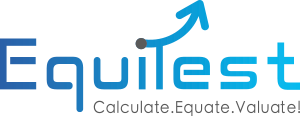How to Evaluate a SaaS Business For Acquisition
In the last couple of months, we have not heard much about How to Evaluate a SaaS Business For Acquisition. We expect to hear a lot about How to Evaluate a SaaS Business For Acquisition soon. It is time to make it clear. This blog post will discuss the question - How to Evaluate a SaaS Business For Acquisition.
Several days ago - I got the following question in my mail:
"We are a SAAS business with $500K yearly revenue with 50% profit margins. One of our clients is interested in acquiring/hiring us. My partner thinks that the value is 1.75 Million. He claims that the rule is 5-7 years in profit. Therefore - 500Kx0.5x7 will get us a value of 1.75 million. What would be our valuation, in your opinion? Thanks".
Valuation is not unfounded rules of thumb. Anyone who understands a little about valuation knows that you can not determine any value, without checking the financial characteristics of the business, without examining which valuation method is suitable for valuation, and without actually applying it.
This blog post will present the general principles that will make it possible to understand how to evaluate a SaaS business for acquisition.
You can apply these principles without difficulty using the equitest tool.
A SaaS company is a company that hosts an application and makes it available to customers over the internet. SaaS stands for Software as a Service.
Customer resource management (CRM) is an example of Saas. These applications allow SaaS customers to manage customer information and track sales through their pipeline.
What is the Churn Rate?
You want to look at a few key numbers when buying software as a service business. The most important is the churn.
Churn rate, also known as attrition rate, is a business metric that calculates the rate customers leave a product over a given period.
To understand how important it is - we will use the following example.
One of the growth drivers of Saas-type businesses is business continuity. A user buys a subscription for a certain period, e.g., one year. At the end of the period, the customer might renew the subscription.
If the annual cost is $ 10,000 - in the first year, a customer will pay $ 10,000 and in the second year another $ 10,000 - a total of $ 20,000 in two years. In 3 years - $ 30,000.
Suppose your SaaS business gain 50 customers a year, with a price of 10,000 dollars per contract. The annual revenue is therefore $ 500,000, during two years - $ 1,000,000. The accumulated amount in three years - will be $1,500,000.
The above ignores the churn rate. A SaaS with a 10% churn rate means - only $450,000 in the second year and only $ 400,000 in the third.
A SaaS with a 20% churn rate means - only $400,000 in the second year and only $ 300,000 in the third.
The conclusion is - as the churn rate increases, the value decreases.
What is the quality of the code?
The most critical asset of SaaS is the code. When we talk about the quality of the code - we need to consider several aspects.
The first aspect is the documentation of the code. Is there a document that characterizes the system, describing what each part of the code does?
The second aspect is technology. Is the code based on 20-year-old technology or the latest technology?
Who owns the Intellectual Property Rights?
Intellectual property (IP) refers to creations of the mind, such as inventions, literary and artistic works; designs; symbols, names, and images used in commerce. In the SaaS business, the intellectual property might include trademarks and the copyright of the code.
SaaS with a trademark has a higher value than SaaS without any brand.
Acquisition of the Saas business must include the purchases of the IP.
If they had anybody else build any part of the codebase, you need to make sure there's an IP assignment agreement that was either in
the vendor contract with that developer.
If they don't have any IP assignment, other people built it; This means that someone else made the code, and it may be the copyright holder of the code.
There are examples of SaaS businesses being sold without the issue of copyright being settled. After signing the agreement, it reached a legal dispute after it turned out that the copyright on the code did not belong to the business, as an external developer developed the code.
How Good is the Customer Support?
The second most important asset of a SaaS business is its customers. We mentioned the abandonment rate. Satisfied customers are equal to the Saas Gold business. They continue to purchase a subscription and thus continue to generate revenue. The way to make customers happy is through support. The business's attitude towards its existing customers will determine its level of satisfaction.
Several metrics can teach about a business's customer service quality, like time to first response and the number of support tickets submitted every week.
You can review the documentation made in the company's support system to learn the quality of customer service. See how much interaction and communication there is with customers to ensure that the company's customer service team has solved real problems and not ignored customer inquiries. Customer support can lead to revenue growth or business decline. Looking at the documentation can teach about customer satisfaction from the business.
Last but not least, the above paragraphs explained the question How to Evaluate a SaaS Business For Acquisition. We hope you found it helpful, and we would love to hear your notes regarding our article.
If you think of selling or acquiring a SaaS business, you can always find it's value for free using our business valuation software.


